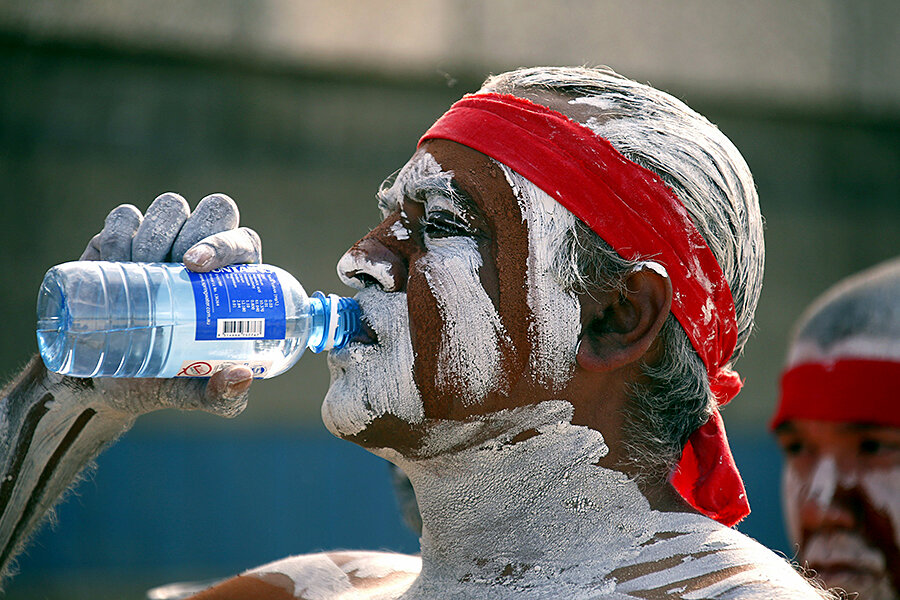How Australians survived a 13-year drought by going low-tech
Loading...
If you think California’s four-year drought is apocalyptic, try 13 years. That’s how long southeastern Australia suffered through bone-dry times.
But it survived. When the so-called Millennium Drought ended in 2009, residents of Melbourne, Australia’s second-largest city, were using half the amount of water they had when it began.
A group of researchers from the University of California, Irvine, set out to investigate how Melbourne, a city of 4.3 million people, dramatically cut water consumption, and whether the city’s experience might hold lessons for California and other drought-stricken regions.
The short answer? Salvation came from a $2,000 rainwater tank rather than a $6 billion desalinization plant.
As the Millennium Drought dragged on, authorities approved the construction of costly infrastructure projects similar to those now being considered in California, including that expensive desalinization plant. But the researchers found that conservation and recycling were the keys that got Melbourne through year after rainless year, according to the study published May 26 in the journal WIREs Water.
Melbourne residents took advantage of government rebates for home rainwater tanks to capture runoff from roofs, using it to water plants and flush toilets. The state of Victoria also changed the building code to require the tanks in all new homes.
By 2009, about a third of homes were capturing free water from the sky and supplying 2 percent of Melbourne’s potable water.
The government also offered subsidies for purchase of water-efficient shower heads, toilets, and washing machines, which combined cut Melbourne’s water use by 4 percent a year.
Since more storm water runoff courses through the city and flows into rivers and the ocean than residents use in a year, the government moved to capture, treat, and reuse some runoff for irrigation. The city also ramped up the use of gray water and recycled water from sewage treatment plants.
As in California, Melbourne officials restricted how often residents could water their lawns but did not raise water rates.
As for that $6 billion desalinization plant, today it serves as a very expensive insurance policy against the return of dry times. The facility was completed in 2012—three years after the drought ended—and has not produced a drop of water.
“The main lesson is that a lot can be done with conservation, and there are so many ways to do that,” said Stanley Grant, a study co-author and a civil and environmental engineer at UC Irvine.
“In Southern California, we’re addicted to technology," he added. "We expect aqueducts to save us, and those days are gone. The modern-day answer people are looking to is desalinization, but that is expensive and very energy-intensive.”
Grant said some of Australia’s low-tech solutions, such as rainwater tanks, would have limited utility in California’s Mediterranean climate, where rain comes, if at all, during a few months in winter.
“The real problem is in the summer when you need the water, it has rained six months earlier,” he said.
Capturing storm water and what Grant calls “urban slobber”—dry-weather runoff—holds more promise. “The ultimate source of urban slobber in a lot of cases is imported water,” he said. “That water ends up finding its way to rivers through sewage treatment plants, overwatering of lawns, washing of cars, and other activities in the urban landscape.”
“It seems to be a real missed opportunity,” he added. “It’s a year-round source, but we don’t do anything to capture and reuse it.”
Some cities in California already are tapping treated wastewater for irrigation. On Tuesday, the Metropolitan Water District of Southern California approved paying homeowners as much as $6,000 to rip out their water-thirsty lawns and plant drought-tolerant landscaping.
The key, said Grant, is to seize the moment to make lasting changes in residents’ behavior as Melbourne apparently has done.
“One lesson for other cities is that major droughts, if serious enough and long-lasting enough," the study stated, "create opportunities for policymakers, as well as pose challenges."
• Todd Woody is TakePart's senior editor for environment and wildlife.
• This article originally appeared at TakePart, a leading source of socially relevant news, features, opinion, entertainment, and information – all focused on the issues that shape our lives. Visit takepart.com/start-from-the-source.
Related stories on TakePart
Meet California's Biggest Water Hogs
Holy Cow! Crops That Use Even More Water Than AlmondsThe West Coast’s Massive Algal Bloom Could Be the Toxic Wave of the FutureThe Food Waste Problem Has an Easily Avoidable Cause: Everyone’s Too Picky







